Mohammad Shikh-Bahaei
Semantic-Aware Visual Information Transmission With Key Information Extraction Over Wireless Networks
Jun 15, 2025Abstract:The advent of 6G networks demands unprecedented levels of intelligence, adaptability, and efficiency to address challenges such as ultra-high-speed data transmission, ultra-low latency, and massive connectivity in dynamic environments. Traditional wireless image transmission frameworks, reliant on static configurations and isolated source-channel coding, struggle to balance computational efficiency, robustness, and quality under fluctuating channel conditions. To bridge this gap, this paper proposes an AI-native deep joint source-channel coding (JSCC) framework tailored for resource-constrained 6G networks. Our approach integrates key information extraction and adaptive background synthesis to enable intelligent, semantic-aware transmission. Leveraging AI-driven tools, Mediapipe for human pose detection and Rembg for background removal, the model dynamically isolates foreground features and matches backgrounds from a pre-trained library, reducing data payloads while preserving visual fidelity. Experimental results demonstrate significant improvements in peak signal-to-noise ratio (PSNR) compared with traditional JSCC method, especially under low-SNR conditions. This approach offers a practical solution for multimedia services in resource-constrained mobile communications.
Generative AI Empowered Semantic Feature Multiple Access (SFMA) Over Wireless Networks
Dec 30, 2024Abstract:This paper investigates a novel generative artificial intelligence (GAI) empowered multi-user semantic communication system called semantic feature multiple access (SFMA) for video transmission, which comprises a base station (BS) and paired users. The BS generates and combines semantic information of several frames simultaneously requested by paired users into a single signal. Users recover their frames from this combined signal and input the recovered frames into a GAI-based video frame interpolation model to generate the intermediate frame. To optimize transmission rates and temporal gaps between simultaneously transmitted frames, we formulate an optimization problem to maximize the system sum rate while minimizing temporal gaps. Since the standard signal-to-interference-plus-noise ratio (SINR) equation does not accurately capture the performance of our semantic communication system, we introduce a weight parameter into the SINR equation to better represent the system's performance. Due to its dependence on transmit power, we propose a three-step solution. First, we develop a user pairing algorithm that pairs two users with the highest preference value, a weighted combination of semantic transmission rate and temporal gap. Second, we optimize inter-group power allocation by formulating an optimization problem that allocates proper transmit power across all user groups to maximize system sum rates while satisfying each user's minimum rate requirement. Third, we address intra-group power allocation to enhance each user's performance. Simulation results demonstrate that our method improves transmission rates by up to 24.8%, 45.8%, and 66.1% compared to fixed-power non-orthogonal multiple access (F-NOMA), orthogonal joint source-channel coding (O-JSCC), and orthogonal frequency division multiple access (OFDMA), respectively.
Fluid Antenna-Assisted Near-Field System
Sep 30, 2024Abstract:This paper proposes a fluid antenna (FA)-assisted near-field integrated sensing and communications (ISAC) system enabled by the extremely large-scale simultaneously transmitting and reflecting surface (XL-STARS). By optimizing the communication beamformer, the sensing signal covariance matrix, the XL-STARS phase shift, and the FA position vector, the Cram\'er-Rao bound (CRB), as a metric for sensing performance, is minimized while ensuring the standard communication performance. A double-loop iterative algorithm based on the penalty dual decomposition (PDD) and block coordinate descent (BCD) methods is proposed to solve the non-convex minimization problem by decomposing it into three subproblems and optimizing the coupling variables for each subproblem iteratively. Simulation results validate the superior performance of the proposed algorithm.
E-Healthcare Systems: Integrated Sensing, Computing, and Semantic Communication with Physical Layer Security
Sep 30, 2024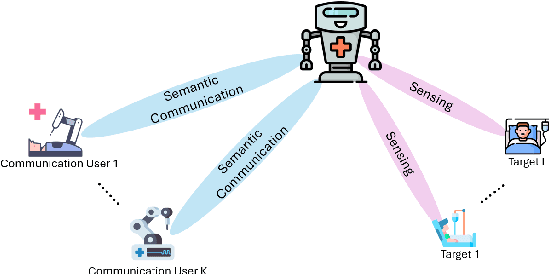
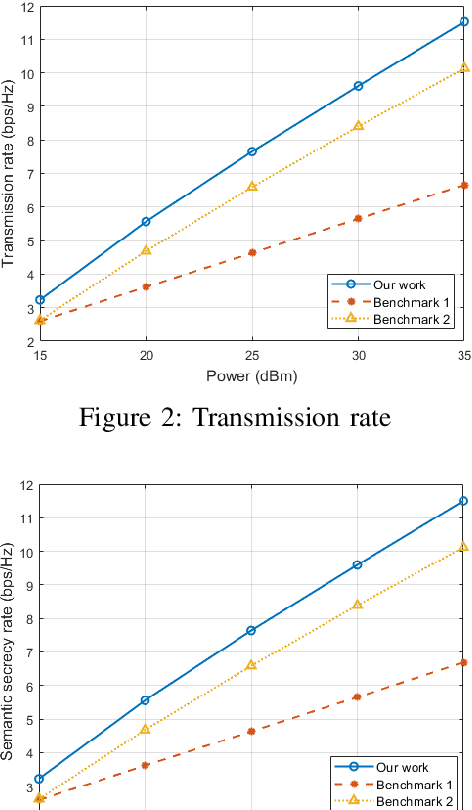
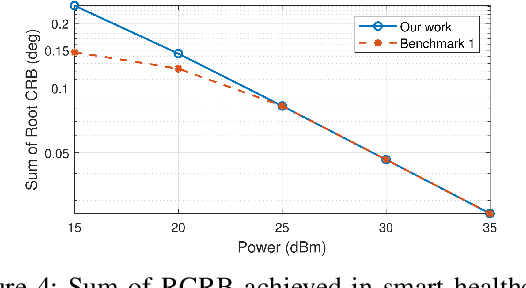
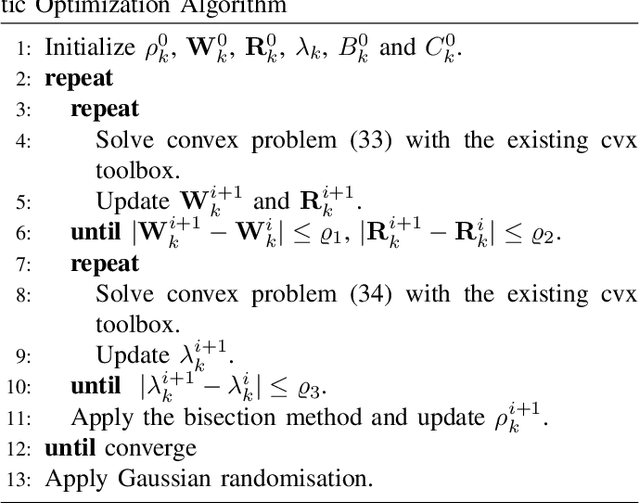
Abstract:This paper introduces an integrated sensing, computing, and semantic communication (ISCSC) framework tailored for smart healthcare systems. The framework is evaluated in the context of smart healthcare, optimising the transmit beamforming matrix and semantic extraction ratio for improved data rates, sensing accuracy, and general data protection regulation (GDPR) compliance, while considering IoRT device computing capabilities. Semantic metrics such as semantic transmission rate and semantic secrecy rate are derived to evaluate data rate performance and GDPR risk, respectively, while the Cram\'er-Rao Bound (CRB) assesses sensing performance. Simulation results demonstrate the framework's effectiveness in ensuring reliable sensing, high data rates, and secure communication.
Hyperdimensional Computing Empowered Federated Foundation Model over Wireless Networks for Metaverse
Aug 26, 2024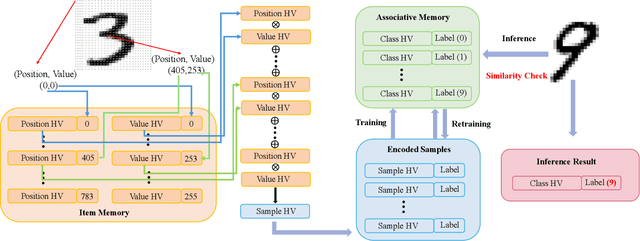

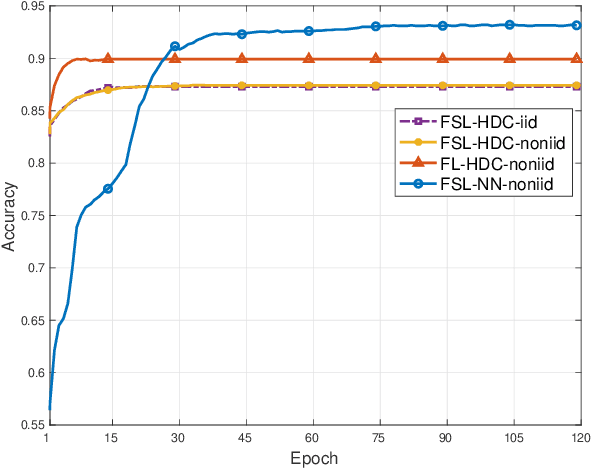
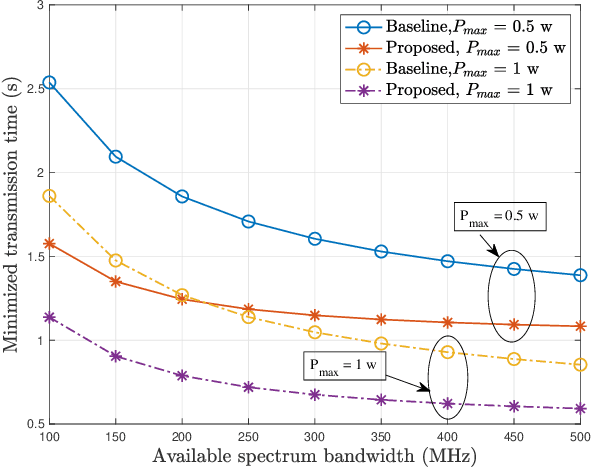
Abstract:The Metaverse, a burgeoning collective virtual space merging augmented reality and persistent virtual worlds, necessitates advanced artificial intelligence (AI) and communication technologies to support immersive and interactive experiences. Federated learning (FL) has emerged as a promising technique for collaboratively training AI models while preserving data privacy. However, FL faces challenges such as high communication overhead and substantial computational demands, particularly for neural network (NN) models. To address these issues, we propose an integrated federated split learning and hyperdimensional computing (FSL-HDC) framework for emerging foundation models. This novel approach reduces communication costs, computation load, and privacy risks, making it particularly suitable for resource-constrained edge devices in the Metaverse, ensuring real-time responsive interactions. Additionally, we introduce an optimization algorithm that concurrently optimizes transmission power and bandwidth to minimize the maximum transmission time among all users to the server. The simulation results based on the MNIST dataset indicate that FSL-HDC achieves an accuracy rate of approximately 87.5%, which is slightly lower than that of FL-HDC. However, FSL-HDC exhibits a significantly faster convergence speed, approximately 3.733x that of FSL-NN, and demonstrates robustness to non-IID data distributions. Moreover, our proposed optimization algorithm can reduce the maximum transmission time by up to 64% compared with the baseline.
Joint Semantic Communication and Target Sensing for 6G Communication System
Jan 30, 2024


Abstract:This paper investigates the secure resource allocation for a downlink integrated sensing and communication system with multiple legal users and potential eavesdroppers. In the considered model, the base station (BS) simultaneously transmits sensing and communication signals through beamforming design, where the sensing signals can be viewed as artificial noise to enhance the security of communication signals. To further enhance the security in the semantic layer, the semantic information is extracted from the original information before transmission. The user side can only successfully recover the received information with the help of the knowledge base shared with the BS, which is stored in advance. Our aim is to maximize the sum semantic secrecy rate of all users while maintaining the minimum quality of service for each user and guaranteeing overall sensing performance. To solve this sum semantic secrecy rate maximization problem, an iterative algorithm is proposed using the alternating optimization method. The simulation results demonstrate the superiority of the proposed algorithm in terms of secure semantic communication and reliable detection.
Distributed Machine Learning for UAV Swarms: Computing, Sensing, and Semantics
Jan 03, 2023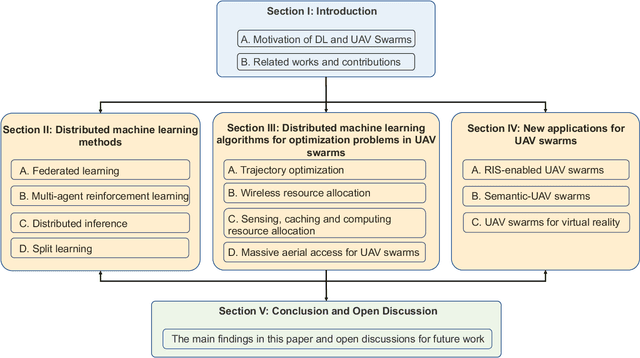
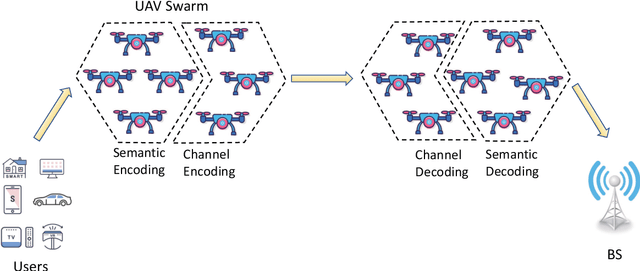

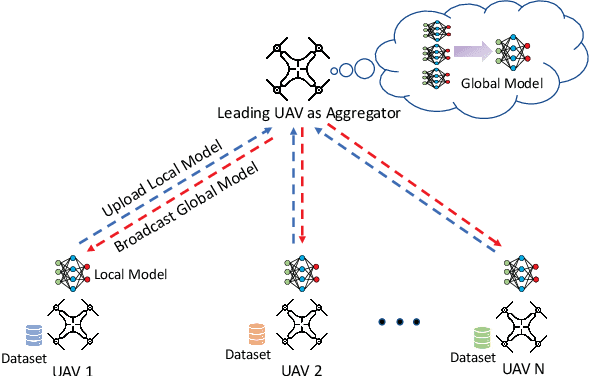
Abstract:Unmanned aerial vehicle (UAV) swarms are considered as a promising technique for next-generation communication networks due to their flexibility, mobility, low cost, and the ability to collaboratively and autonomously provide services. Distributed learning (DL) enables UAV swarms to intelligently provide communication services, multi-directional remote surveillance, and target tracking. In this survey, we first introduce several popular DL algorithms such as federated learning (FL), multi-agent Reinforcement Learning (MARL), distributed inference, and split learning, and present a comprehensive overview of their applications for UAV swarms, such as trajectory design, power control, wireless resource allocation, user assignment, perception, and satellite communications. Then, we present several state-of-the-art applications of UAV swarms in wireless communication systems, such us reconfigurable intelligent surface (RIS), virtual reality (VR), semantic communications, and discuss the problems and challenges that DL-enabled UAV swarms can solve in these applications. Finally, we describe open problems of using DL in UAV swarms and future research directions of DL enabled UAV swarms. In summary, this survey provides a comprehensive survey of various DL applications for UAV swarms in extensive scenarios.
AoA-Based Pilot Assignment in Massive MIMO Systems Using Deep Reinforcement Learning
Mar 25, 2021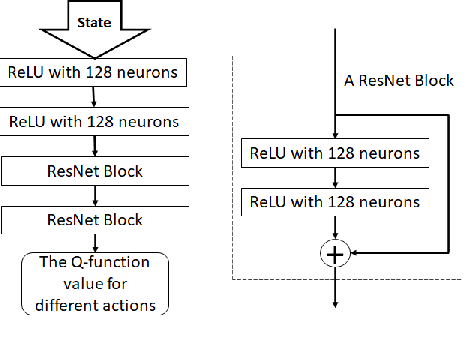
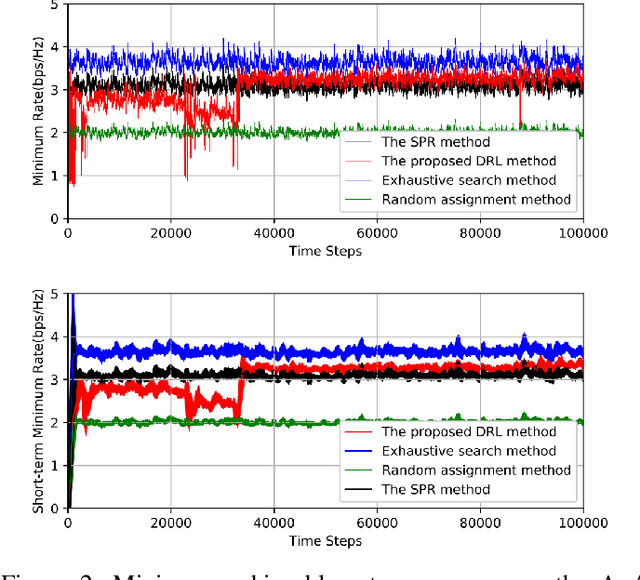
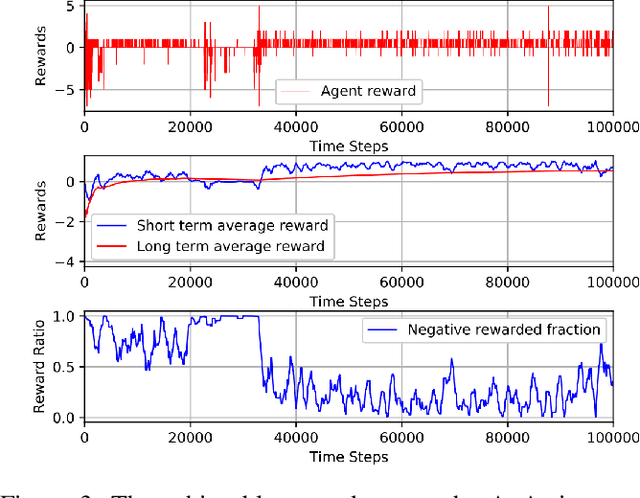
Abstract:In this paper, the problem of pilot contamination in a multi-cell massive multiple input multiple output (M-MIMO) system is addressed using deep reinforcement learning (DRL). To this end, a pilot assignment strategy is designed that adapts to the channel variations while maintaining a tolerable pilot contamination effect. Using the angle of arrival (AoA) information of the users, a cost function, portraying the reward, is presented, defining the pilot contamination effects in the system. Numerical results illustrate that the DRL-based scheme is able to track the changes in the environment, learn the near-optimal pilot assignment, and achieve a close performance to that of the optimum pilot assignment performed by exhaustive search, while maintaining a low computational complexity.
Delay Minimization for Federated Learning Over Wireless Communication Networks
Jul 05, 2020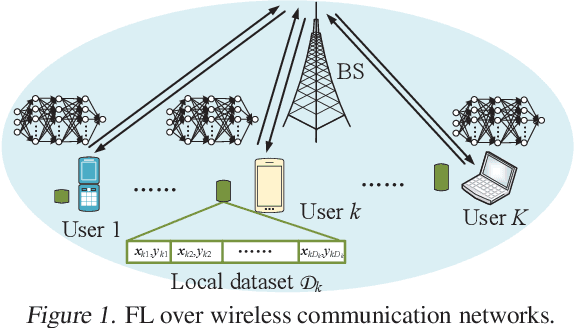
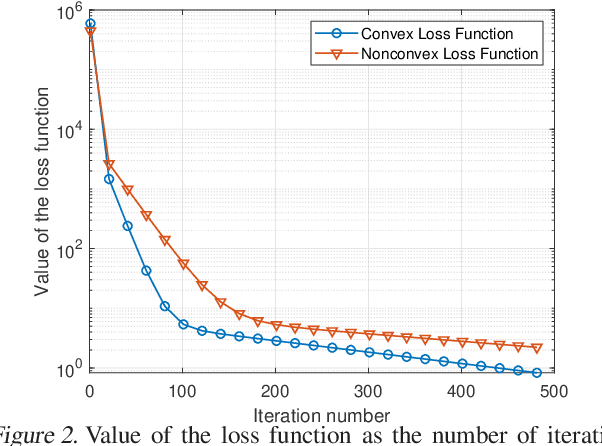
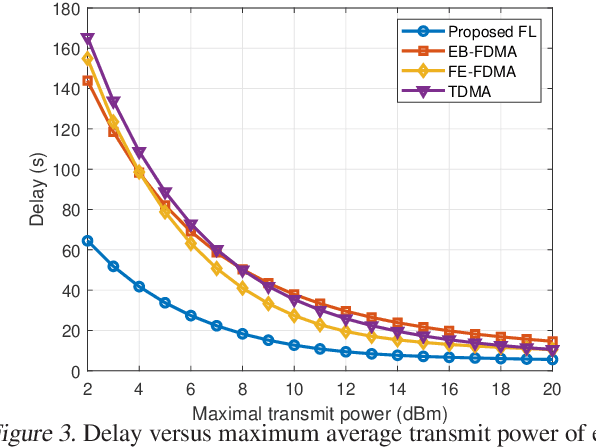
Abstract:In this paper, the problem of delay minimization for federated learning (FL) over wireless communication networks is investigated. In the considered model, each user exploits limited local computational resources to train a local FL model with its collected data and, then, sends the trained FL model parameters to a base station (BS) which aggregates the local FL models and broadcasts the aggregated FL model back to all the users. Since FL involves learning model exchanges between the users and the BS, both computation and communication latencies are determined by the required learning accuracy level, which affects the convergence rate of the FL algorithm. This joint learning and communication problem is formulated as a delay minimization problem, where it is proved that the objective function is a convex function of the learning accuracy. Then, a bisection search algorithm is proposed to obtain the optimal solution. Simulation results show that the proposed algorithm can reduce delay by up to 27.3% compared to conventional FL methods.
Channel Assignment in Uplink Wireless Communication using Machine Learning Approach
Jan 12, 2020
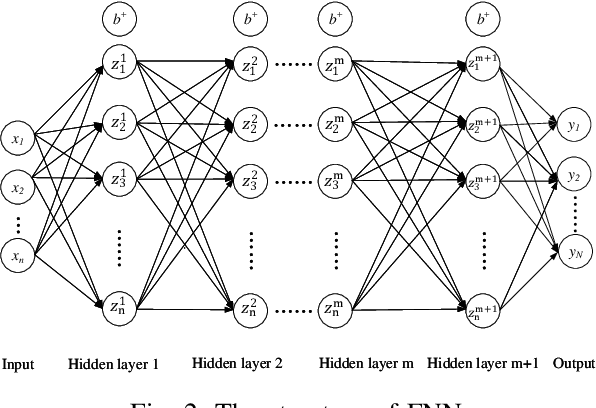

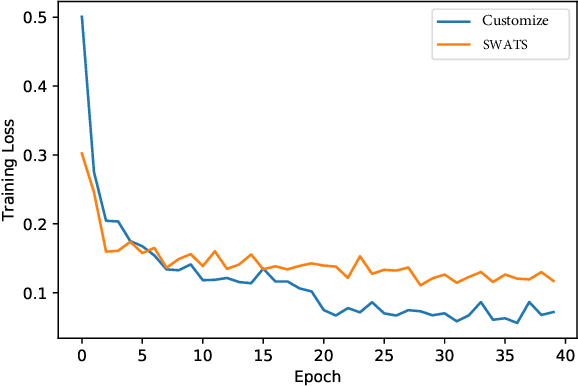
Abstract:This letter investigates a channel assignment problem in uplink wireless communication systems. Our goal is to maximize the sum rate of all users subject to integer channel assignment constraints. A convex optimization based algorithm is provided to obtain the optimal channel assignment, where the closed-form solution is obtained in each step. Due to high computational complexity in the convex optimization based algorithm, machine learning approaches are employed to obtain computational efficient solutions. More specifically, the data are generated by using convex optimization based algorithm and the original problem is converted to a regression problem which is addressed by the integration of convolutional neural networks (CNNs), feed-forward neural networks (FNNs), random forest and gated recurrent unit networks (GRUs). The results demonstrate that the machine learning method largely reduces the computation time with slightly compromising of prediction accuracy.
 Add to Chrome
Add to Chrome Add to Firefox
Add to Firefox Add to Edge
Add to Edge